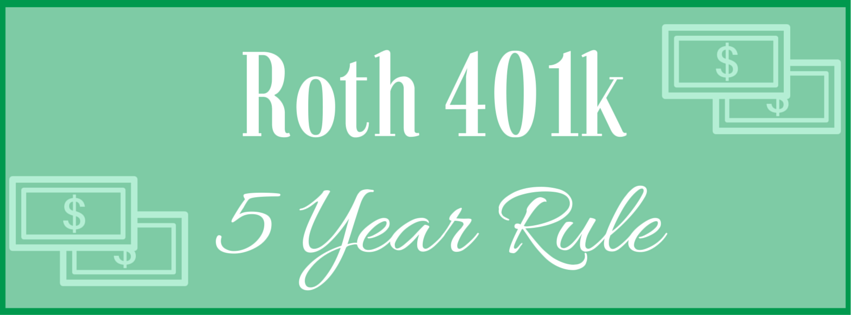The Roth 401(k) five-year rule determines when you begin receiving tax-free qualified distributions from your 401(k) plan Roth account. It is similar to the five-year rule that applies to Roth IRAs, but there are important differences.
Withdrawals made from your Roth 401(k) plan account–including both your contributions and investment earnings–are completely tax and penalty free if you satisfy the five-year holding period and one of the following also is true:
- You are at age 59½ or older
- You have a qualifying disability, or
- The withdrawal is made by your beneficiary/estate after your death
The five-year period of holding begins on the first day of the calendar year in which you make your first Roth 401(k) contribution (regular or rollover). An example is if you made your first Roth contribution to your company’s 401(k) plan in December 2014, your five-year holding period begins on January 1, 2014, and ends on December 31, 2018.
If you have participated in 401(k) plans maintained by different employers, your five-year holding period is determined separately for each plan. But there is an exception. If you make a direct rollover of Roth dollars from your old employer’s plan to your new employer’s plan, the five-year holding period for the new plan will start with the year you made your first Roth contribution to the prior plan.
For example, Jane made Roth contributions to the Widget 401(k) plan beginning in 2011. In 2015, she changed jobs and began making Roth contributions to the Service Corporation 401(k) plan. Her five-year holding period for the Widget plan began on January 1, 2011, and ends on December 31, 2015. Her five-year holding period for the Service Corp. plan began on January 1, 2015, and ends on December 31, 2019. In 2015, Jane decides to make a direct rollover of her Widget Roth account to Service Corp.’s 401(k) plan. Because of the rollover, Jane’s January 1, 2011, starting date at Widget will carry over to the Service Corp.’s plan, and any distributions she receives from her Service Corporation Roth account after 2015 (rather than 2018) will be tax free (assuming she’s at least age 59½ or disabled at the time of distribution).
The other rule is this: When you convert a traditional IRA to a Roth IRA, the amount converted (except for any after-tax contributions you’ve made) is subject to income tax when converted. However, your conversion is not subject to the 10% early distribution penalty, even if you haven’t yet reached age 59½.
If you withdraw any portion of your taxable conversion within five years, you pay the 10% early distribution penalty on those funds that you avoided previously–unless you’ve reached age 59½ or qualify for a different exemption from the penalty tax. The five-year holding period starts on January 1 of the year you converted your traditional IRA to a Roth IRA. And if you have more than one conversion, each one will have its own separate five-year holding period for this reason.
If you would like to talk with a financial planner with more experience in this field, contact us today for a referral to someone we trust.
Source: Financial E-news, HBW Insurance & Financial Services, Inc.
